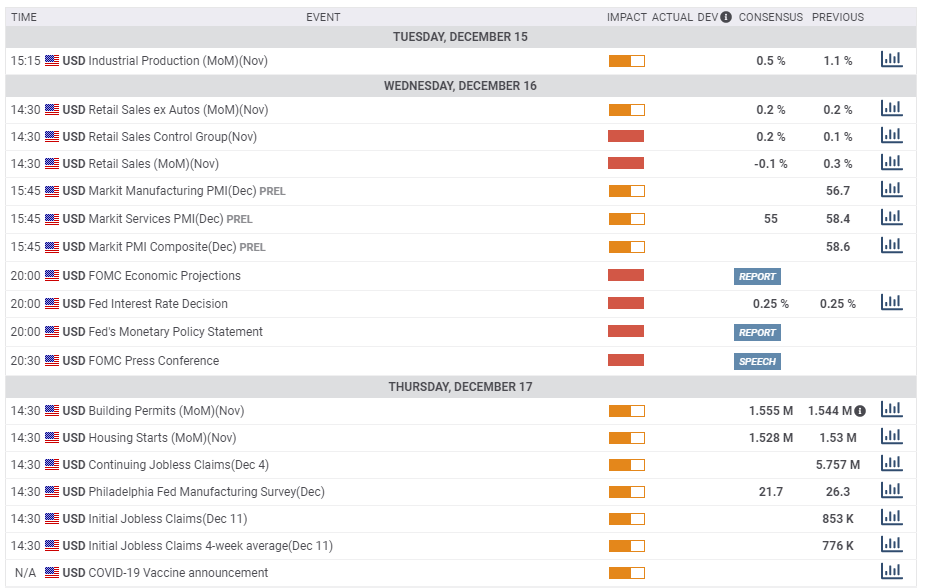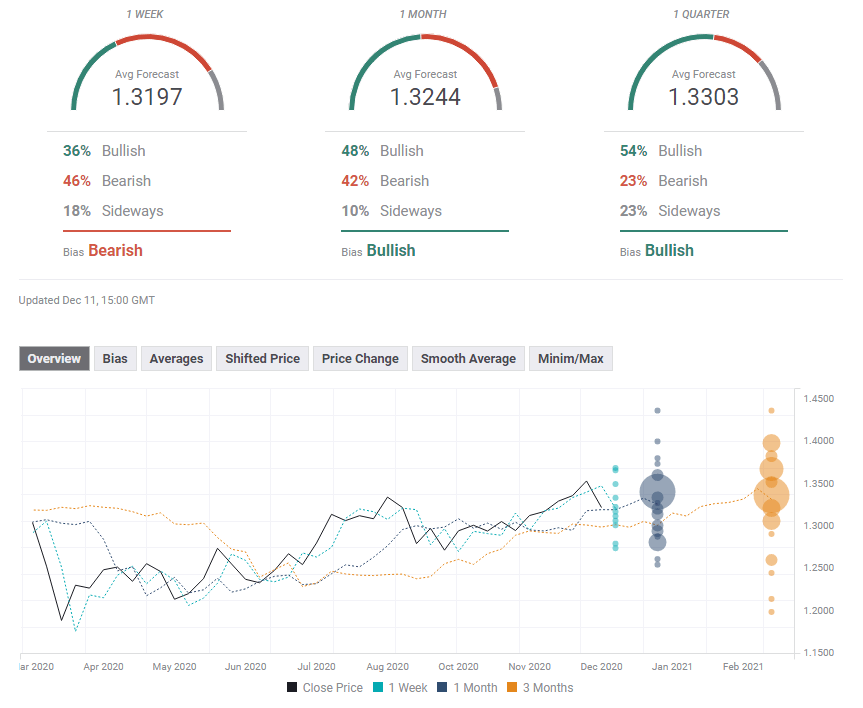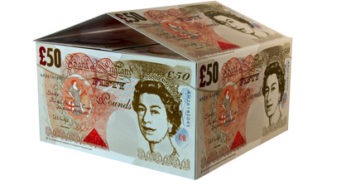No deal at dinner but perhaps over the weekend? A nerve-wracking week concludes with growing fears Brexit talks could collapse. Apart from the all-important deliberations, rate decisions on both sides of the pond are eyed. One thing looks certain – extreme volatility.
This week in GBP/USD: Brexit gets wilder
Between hope and despair – while tensions and volatility may further rise, the first week of December consisted of top-level talks and violent swings in sterling’s value. When The Sun reported that Prime Minister Boris Johnson is willing to ditch talks “within hours,” the pound sank. It then rose from the ashes when the UK government offered a concession on the controversial Internal Market Bill.
While Chief EU Negotiator Michel Barnier and his British counterpart David Frost dived into different types of fish, they made way for Johnson and European Commission President Ursula von der Leyen to thrash out other details. A long dinner – including underwater dwellers – failed to break the ice and both sides began talking of higher chances for a no-deal exit.
Vaccine: Margaret Keenan, 90 years old, was the first person to receive the Pfizer/BioNTech coronavirus vaccine in the UK. While some feared that Britain rushed the jab’s approval, the US Food and Drugs Administration (FDA) followed its own green light. Seeing Keenan receiving a shot in the arm did the same for markets.
Virus situation: While the cavalry is already here, COVID-19 continues spreading at a worrying pace. US infections, deaths and hospitalizations have reached all-time highs – including in the less-volatile rolling averages. The drop in UK cases began to reverse following the lifting of the nationwide lockdown, a disheartening development that also weighed on sentiment.
Covid infections in the US, the EU and the UK

Source: FT
US stimulus: Bad news did not instantly turn into good news. The downbeat Nonfarm Payrolls report had little impact on Senate Majority Leader Mitch McConnell, who prefers around half the size of the bipartisan offer of $908 billion. The lack of progress in Washington cooled markets’ enthusiasm.
UK Gross Domestic Product rose by 0.4% in October as expected. November has likely been worse due to the deteriorating virus situation.
UK events: Brexit, BOE, and Boris’ covid decisions
Brexit: The clock continues ticking and deadlines often force compromises. Is the recent finger-pointing only a show for the domestic audience ahead of painful concession? That remains an open question.
At the time of writing, the most contentious issue is not fish, but rather the Level Playing Field (LPF). The EU wants guarantees that a post-Brexit Britain would not undercut the bloc by lowering standards, while the UK insists it must be free of any limits as a sovereign nation.
The new deadline is Sunday night, and the only hard cut-off is December 31, when the transition period expires. In case there is no deal over the weekend, talks will likely break up before informal discussions may lead to fresh deliberations. The Brexit saga lives on, promising a high dose of action.
PM Johnson still has another burning issue in his intray – coronavirus. With cases on the rise again but vaccination underway, will he opt for new restrictions? Tightening the screws on several areas where the virus is spreading is likely on the cards. Markets are likely to remain calm while London remains in Tier 2 rather than under the grip of Tier 3.Thursday will mark two weeks since the nationwide lockdown expired, allowing for a reassessment of the return to a localized approach.
The economic calendar is packed ahead of the holidays. Britain’s Unemployment Rate likely edged up in October, albeit at a moderate pace as the furlough scheme was extended. If it holds below 5%, the pound could rise. The Claimant Count Change figures for November will likely be gloomier, reflecting the impact of the lockdown on jobseeking. However, claims dropped in the previous two months, opening the door to another encouraging surprise.
Britain’s Consumer Price Index bounced off the lows and hit 0.7% in November, yet it is still far from the Bank of England’s 2% target. Another marginal increase is likely, yet while inflation refrains from falling into negative territory, its impact is likely to remain minor.
Consumption has been one of the stronger sides of the British economy, up 5.8% yearly in October. After a monthly increase of 1.3% back then, a more modest advance is on the cards for November. A month-over-month drop is unlikely due to Black Friday sales.
The main event of the week is the BOE’s decision on Thursday. Less than 24 after the Fed, the “Old Lady” will likely attempt to end the year quietly as well. Andrew Bailey, Governor of the Bank of England, announced an expansion of the bond-buying scheme by £150 billion, beating expectations and boosting the pound – contrary to the old logic that printing money devalued the underlying currency.
The bank publically discussed the option of setting negative interest rates – a specter that sent sterling lower on each mention. However, as time passes by and with hopes of the vaccine, the chances for such a move are dropping. Any hint that sub-zero borrowing costs are on the agenda would hurt the pound.
Bailey and his eight colleagues at the Monetary Policy Committee (MPC) are set to balance assessing the risks to the economy amid the winter wave and reacting to vaccine hopes.
Here is the list of UK events from the FXStreet calendar:

US events: Fed, stimulus and another vaccine eyed
Which will come first, a Brexit deal or a stimulus accord in Washington? Time is running out to agree on a relief package before the Christmas break and Georgia’s runoff elections on January 5. Markets will probably “buy” any deal now and hope for another one under the new administration. Even a $500 billion boost is better than nothing, but a stronger reaction is likely if the $908 billion bipartisan agreement receives the green light.
Another potential green light comes from the FDA, which is set to authorize Moderna’s vaccine after giving the nod to the Pfizer/BioNTech one. Having gold-standard seals for two jabs would undoubtedly cheer markets.
The last full trading week of the year features two critical events, both on Wednesday. First, Retail Sales for November will be closely watched, as they may signal a slowdown in response to the virus’s surge. Consumer confidence dropped last month and now the hard data is eyed.
The second event is the Federal Reserve’s final rate decision for 2020. An eventful year packed with multi-trillion bond-buying and new programs will likely come to an end with a whimper. Investors’ expectations for a faster clip of Quantitative Easing – as vaguely hinted in the previous meeting – have faded. Recent comments from Fed officials downplayed the need for immediate measures. The bank will likely wait and only commit to additional action if appropriate. That could send the dollar higher.
Here the upcoming top US events this week:

GBP/USD technical analysis
Pound/dollar is still holding above the 50-day, 100-day, and 200-day Simple Moving Averages – and momentum remains positive – despite the recent drop. These factors allow for some upside while cable holds above the uptrend support lines, which runs since late September and currently hits the price at around 1.3050.
Overall, GBP/USD bulls may reawaken.
Resistance awaits at 1.3310, a swing high in November, which is followed by 1.34, which capped sterling later in the month. The December swing high of 1.3480 and the 2020 peak at 1.3540 are the next lines to watch.
Support awaits at 1.31, a stepping stone on the way up. The next round figure, 1.30, held GBP/USD down early in the autumn. It is followed by 1.2850, a stubborn cushion in October, and then by 1.28.

GBP/USD sentiment
The EU and the UK both want a deal – opening the door for a breakthrough over the weekend. While a full deal may have to wait, there is room for recovery.
The FXStreet Forecast Poll is showing that experts expect further pain in the upcoming week before cable makes a U-turn and embarks on a recovery path in the medium and long terms. Average targets have been downgraded in the past week.

Related reads
Get the 5 most predictable currency pairs
